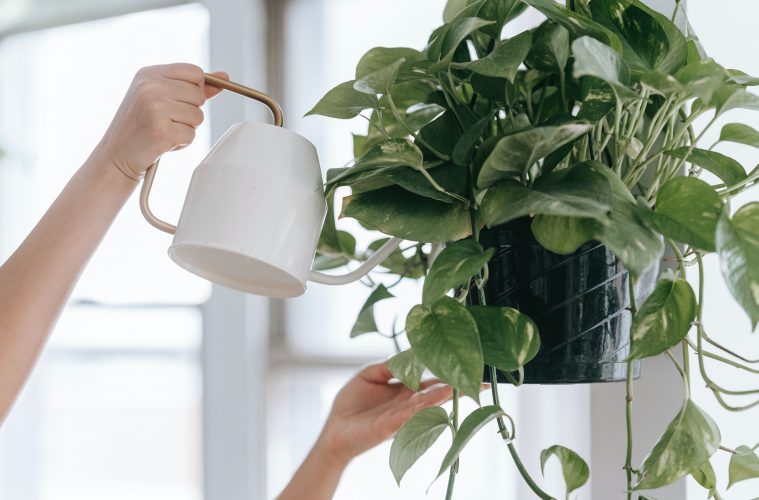Houseplants have their own particular problems as we grow them inside, often in an artificial microclimate. We also tend to spoil houseplants, and there is no doubt that the most common mistake made with house plants is overwatering. In general, they need the correct temperature, light and humidity.
Yellowing leaves, dropping leaves and brown leaf tips are often symptoms of over or under-watering. They could also be a sign of poor drainage in the pot so make sure that your plant is not sitting in water and that the water is draining freely through the soil.
Spots on leaves often indicate a fungal or bacterial disease. Remove all affected material, make sure that the plant is not receiving excessive water and spray with an anti-fungal spray. There are good organic options available if you do not want poisons in your home.
Powdery mildew – this disease is caused by a fungus and makes your plant look as though it has been sprinkled with sifted flour. Mildew is usually worsened by high humidity, low light and poor air circulation. If they are given the right environment the spores settle on the plant and rapidly multiply causing the plant to fail to thrive and to ultimately die. Spray with an anti-fungal spray as soon as you notice the signs of an infection.
Red spider mite, mealy bug and scale are the most common little critters that attack indoor plants. Pay attention to the plant’s environment and try and increase air flow and decrease humidity as these factors seem to make matters worse. An infestation of any of these three will make the plant weak and susceptible to everything else. Use a regular insecticide formulated for house plants, or organic if you prefer – the key is to get them early.
Feature image: Teona Swift/Pexels
ALSO SEE: 4 WAYS TO STOP FROST FROM KILLING YOUR PLANTS


